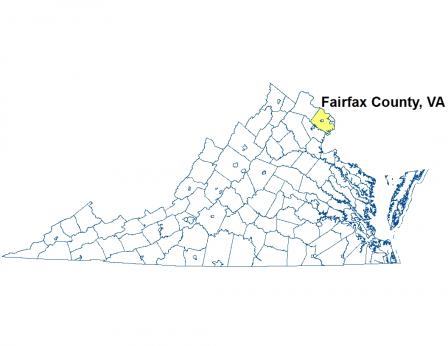Stories of Progress in Achieving Healthy Waters
U.S. EPA Region 3 Water Protection Division
Fairfax County, Virginia • September 17, 2015
More than 500 million gallons a year of treated wastewater that would otherwise be discharged into a tributary of the Chesapeake Bay are instead being put to beneficial reuse to cool a waste-to-energy plant and irrigate a golf course and ball fields in Fairfax County, Virginia.
Fairfax County used nearly $7 million in EPA Clean Water Act funding to help construct a system to pump the non-potable water to the facilities – providing a source of income for the county, keeping additional nutrients out of Pohick Creek, conserving drinking water, and offering a bargain to reuse customers.
A five-mile network of purple pipes – a color reserved for pipes carrying water that is not for drinking purposes – runs from the county’s Noman M. Cole Jr. Pollution Control Plant in Lorton, VA, to the Covanta Fairfax Inc. Resource Recovery Facility, the Laurel Hill Golf Club and a series of ball fields in Lower Potomac Park.
The water reclamation and reuse project is one of a number in operation in counties and communities in Virginia, including Loudon County, where two projects, partially funded by EPA, are delivering reclaimed water to commercial facilities.
Virginia is home to the nation’s first program to augment a reservoir with recycled water. Since 1978, the upper Occoquan Sewage Authority has been discharging recycled water into a stream above Occoquan Reservoir, a potable water supply source for Fairfax County. Virginia adopted state regulations for water reclamation and reuse projects in October 2008.Fairfax County receives about $1 million a year from the sale of its reclaimed water, according to Michael McGrath, director of the Wastewater Treatment Division of the county’s Department of Public Works and Environmental Services.
By preventing volumes of treated wastewater from entering Pohick Creek and eventually the Potomac River and Chesapeake Bay, the project has helped the plant stay under its cap on nitrogen and phosphorus pollution. The water reclamation project is conserving potable water that the energy facility, golf course and fields would ordinarily use, and rewarding those customers with a 25 percent discount on their water bills. Recycled water is most commonly used for agriculture, landscape, public parks, and golf course irrigation, as well as cooling water for power plants and oil refineries, industrial process water, toilet flushing, dust control, construction activities, concrete mixing, and artificial lakes.

-
Water Reuse Project in VA Providing Multiple Benefits (PDF)(1 pg, 672 K,
09/17/2015)
More than 500 million gallons a year of treated wastewater that would otherwise be discharged into a tributary of the Chesapeake Bay are instead being put to beneficial reuse to cool a waste-to-energy plant and irrigate a golf course and ball fields in Fairfax County, Virginia.
